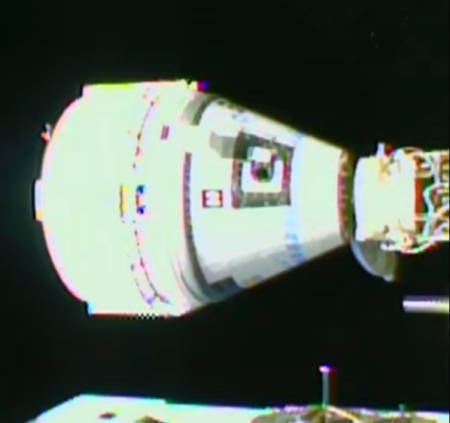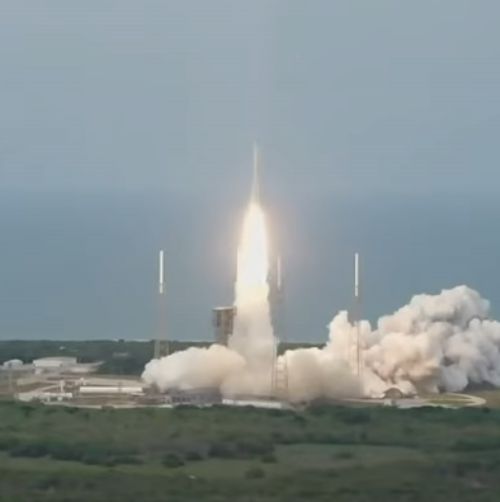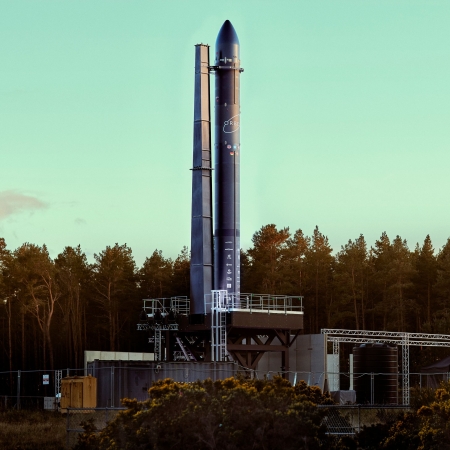Starliner successfully docks with ISS

Screen capture just after soft docking.
Boeing and NASA today successfully docked an unmanned Starliner capsule to ISS for the first time, completing the up-from-Earth portion of this demo mission to prove out this Boeing spacecraft as a future ferry to bring astronauts to and from the station.
The screen capture to the right, taken from the live feed, shows Starliner just after a successful soft capture docking. This was shortly followed by a hard dock.
They will open the hatch tomorrow after checking out the capsule’s linkage with ISS.
The docking itself was delayed by about 78 minutes, partly to time the docking during a period of good orbital communications and partly because of an issue with NASA’s own docking ring on the station that required engineers to reset it.

Screen capture just after soft docking.
Boeing and NASA today successfully docked an unmanned Starliner capsule to ISS for the first time, completing the up-from-Earth portion of this demo mission to prove out this Boeing spacecraft as a future ferry to bring astronauts to and from the station.
The screen capture to the right, taken from the live feed, shows Starliner just after a successful soft capture docking. This was shortly followed by a hard dock.
They will open the hatch tomorrow after checking out the capsule’s linkage with ISS.
The docking itself was delayed by about 78 minutes, partly to time the docking during a period of good orbital communications and partly because of an issue with NASA’s own docking ring on the station that required engineers to reset it.


